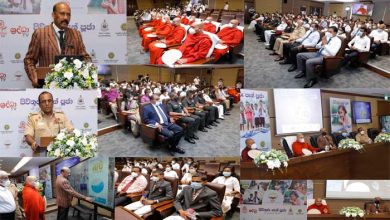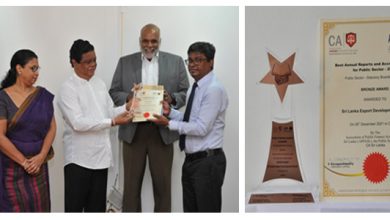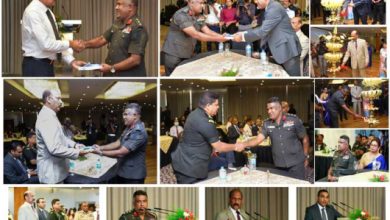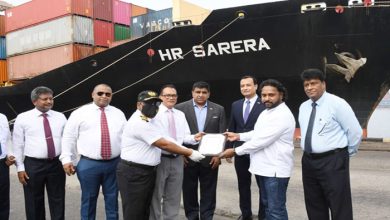Sri Lanka Ports Authority (SLPA) wins the 2022 GPF Awards for the Ports Authority of the Year Award.
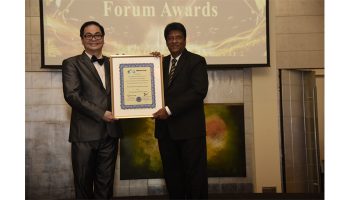
Sri Lanka Ports Authority (SLPA) has won the ‘Ports Authority of the Year Award’ at the 2022 Global Port Forum Awards (GPF) held on 28th September 2022 in Dubai, UAE. The award is presented to an international Port Authority balancing interests of all stakeholders, implementing progressive and development-oriented policies with environmental sustainability. The appreciation in the global level is emphasized a valuable point in marketing of SLPA in the global and international maritime sector.
SLPA’s Managing Director, Mr.Upul Jayatissa and Director Operations, Mr.Lal Weerasinghe attended the event. Mr Upul Jayatissa, Managing Director SLPA received the 2022 GPF Award for the Ports Authority of the Year from Thomas Ng, Executive Chairman, Global Port Forum.
The Global Ports Forum (GPF) is committed to improve Global Ports and furthering the interests of the ports globally through collaborations among members of the ports eco system.
In continuation of this committeemen, GPF has taken several initiatives to organize Global Port Forum event and Global Port Forum Awards in Dubai, UAE, which is the centre of Global Maritime activities and Hub of major Trade routes.
The primary objective of The Global Port Forum Awards is to recognize the most valuable contribution made by the organizations and professionals in different Areas of Ports and Terminals industry and acknowledge their roles and achievements.
Sri Lanka Ports Authority (SLPA) was awarded the Ports Authority of the Year Award first in 2018 by the Global Ports Forum (GPF). In 2020, SLPA won the GPF Awards for ‘The Port Authority of the Year and Port Infrastructure Development of the Year.


